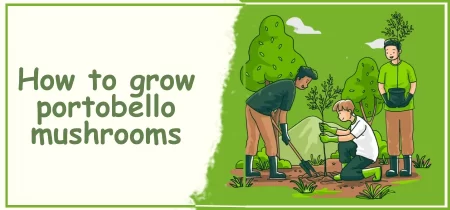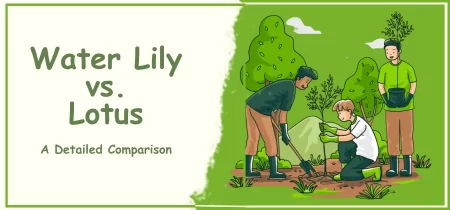Hoya plants are a popular choice for indoor gardening enthusiasts. In this article, we’ll compare two popular varieties – Hoya Krimson Queen and Hoya Princess.
These plants are known for their beautiful vines and flower clusters that add a touch of elegance to any space. So let’s dive into the world of hoya krimson queen vs. princess and explore their similarities and differences.
The main difference between Hoya Krimson Queen and Hoya Princess
The main difference between Hoya Krimson Queen and Hoya Princess is their appearance. Hoya Krimson Queen has thick, waxy leaves that are variegated with green, white, and pink tones, while Hoya Princess has thinner, dark green leaves with lighter veins.
The flowers of Hoya Krimson Queen are usually pink and white, while those of Hoya Princess are typically white or cream-colored.
In terms of care, both plants have similar needs and are relatively easy to maintain. However, Hoya Krimson Queen may require more sunlight to maintain its variegation, while Hoya Princess may prefer slightly shadier conditions.
Overall, the choice between Hoya Krimson Queen and Hoya Princess may come down to personal preference in appearance. Both plants are beautiful and make great additions to any indoor plant collection.
Appearance and Features
Hoya plants are known for their unique and striking appearance, and both Hoya Krimson Queen and Hoya Princess are no exception.
Hoya Krimson Queen’s appearance
Hoya Krimson Queen has leaves that are variegated with shades of green, cream, and pink. Its leaves are oval-shaped and thick, giving it a sturdy appearance. The vines of Hoya Krimson Queen are also thick and strong, allowing them to grow upwards or trail down.
Hoya Princess’ Appearance
On the other hand, Hoya Princess has solid green leaves that are more elongated and pointed than Hoya Krimson Queen. The leaves of Hoya Princess are also thinner and more delicate in comparison.
Comparison of the appearance of both plants
When compared side by side, the differences in the appearance of Hoya Krimson Queen and Hoya Princess become more apparent.
Hoya Krimson Queen is more vibrant in color due to its variegated leaves, while Hoya Princess has a more subtle appearance.
Notable features of each plant
Hoya Krimson Queen’s most notable feature is its variegated leaves, which make it a popular choice for indoor decor.
On the other hand, Hoya Princess is known for its fragrant flowers that bloom in clusters. Both plants have thick, strong vines that allow them to climb and trail, making them versatile options for any plant enthusiast.
Light and Temperature Requirements
Hoya plants require bright, indirect light to thrive. They prefer bright, filtered light and can tolerate some shade. A north-facing window or east-facing window with sheer curtains is ideal.
Regarding temperature, Hoya plants prefer warm and humid environments. The ideal temperature range for Hoya Krimson Queen and Hoya Princess is between 60°F and 80°F.
Temperatures below 50°F can damage the plants, while temperatures above 90°F can cause them to wilt.
Factors such as humidity and air circulation can affect their growth. Hoya plants prefer humidity levels between 40% to 60%.
If the air is too dry, you can increase humidity by placing a tray of water near the plants or using a humidifier. Good air circulation can also prevent pests and diseases from affecting the plants.
Hoya Krimson Queen and Hoya Princess have similar light and temperature requirements. Providing them with bright, filtered light and warm and humid conditions can help them thrive.
Remember that factors such as humidity and air circulation can also affect their growth.
Watering and Soil
Hoya Krimson Queen and Hoya Princess are beautiful plants that require proper watering and soil preparation for optimal growth. Here are some important things to know:
Watering requirements for Hoya Krimson Queen:
- Water once a week or when the soil is dry to the touch
- Use room temperature water to avoid shocking the roots
- Avoid overwatering, as it can lead to root rot
Watering requirements for Hoya Princess:
- Water once every 10 to 14 days or when the soil is almost dry
- Use filtered water to prevent mineral buildup
- Do not overwater, as it can cause the roots to rot
Comparison of the watering needs of both plants:
- Hoya Krimson Queen requires more frequent watering than Hoya Princess
- Overwatering can be detrimental to both plants
Type of soil suitable for each plant:
- Hoya Krimson Queen prefers a well-draining soil mixture with perlite or sand
- Hoya Princess thrives in a soil mix that is well-draining and rich in organic matter
Tips for proper soil preparation:
- Use a soil mix that is specifically designed for indoor plants
- Add perlite or sand to the soil mixture to improve drainage
- Do not pack the soil too tightly around the roots, as it can impede growth and cause root rot
By following these guidelines, you can ensure that your Hoya Krimson Queen and Hoya Princess are properly hydrated and have the right soil conditions to flourish.
Propagation and Repotting
Hoya plants are known for their ease of propagation and are popular among novice and experienced gardeners. Here we will discuss how to propagate and repot Hoya Krimson Queen and Hoya Princess.
How to propagate Hoya Krimson Queen:
Hoya Krimson Queen can be propagated through stem cuttings. The best time to take cuttings is during the growing season, from spring to summer.
Select a healthy stem that has at least two leaves and a node. Cut the stem below the node using a sharp and clean pair of scissors.
Remove the bottom leaves and dip the cut end in the rooting hormone. Plant the cutting in a well-draining potting mix and keep it moist until roots develop.
How to propagate Hoya Princess:
Hoya Princess can also be propagated through stem cuttings. The process is similar to that of Hoya Krimson Queen.
Choose a healthy stem that has at least one node and two leaves. Cut the stem just below the node and remove the lower leaves. Dip the cut end in rooting hormone and plant it in a well-draining potting mix. Keep the soil moist until roots develop.
Comparison of the propagation methods for both plants:
Both Hoya Krimson Queen and Hoya Princess can be propagated through stem cuttings. However, Hoya Krimson Queen is known to root more quickly and easily than Hoya Princess.
Repotting frequency for each plant:
Hoya Krimson Queen and Hoya Princess prefer to be slightly pot-bound, so they do not need to be repotted frequently. It is best to repot them every two to three years. Repotting can be done in the spring or summer months when the plant is actively growing.
Best time to repot:
The best time to repot Hoya plants is during the growing season when they are actively producing new growth.
Make sure to choose a pot slightly larger than the current one and use a well-draining potting mix. Water the plant thoroughly after repotting it and place it in a bright, indirect light.
Pests and Diseases
Hoya Krimson Queen and Hoya Princess are generally hardy plants, but they can still be affected by pests and diseases.
It’s essential to be aware of the common problems that can arise so that you can take appropriate action before they become severe.
Common pests that attack Hoya Krimson Queen include spider mites, mealybugs, and scale insects. On the other hand, Hoya Princess is prone to aphids, spider mites, and whiteflies.
Both plants can also be attacked by thrips, tiny insects that can cause significant damage to the leaves.
The susceptibility of Hoya Krimson Queen and Hoya Princess to pests and diseases can vary. While Hoya Krimson Queen is generally more resistant to pests and diseases, Hoya Princess is more susceptible and may require more care and attention.
Signs of pest infestation and disease in these plants include yellowing or curling of leaves, leaf drops, and small insects on the plant. If you notice any of these signs, it’s crucial to take immediate action to prevent further damage.
To prevent pest infestations, keep your plants clean and free of debris. You can also use insecticidal soap or neem oil to control pests. If you’re dealing with a severe infestation, you may need to use a stronger pesticide, but be sure to read the instructions carefully and follow them precisely.
For diseases, it’s best to avoid overwatering, as this can lead to root rot, which can be fatal for your plant.
You should also avoid overcrowding your plants, as this can create a breeding ground for pests and diseases. If you suspect your plant has a disease, remove any affected leaves and isolate the plant to prevent the spread of the disease.
Hoya Krimson Queen and Hoya Princess are beautiful plants that can add a touch of elegance to any home. However, they require proper care and attention to thrive.
By following the tips and guidelines mentioned above, you can help ensure that your plants remain healthy and free of pests and diseases.
Maintenance and Care
Hoya Krimson Queen and Hoya Princess are two popular houseplants known for their attractive foliage and beautiful flowers. Although they belong to the same genus, they have some differences in their care requirements.
Tips for maintaining Hoya Krimson Queen:
- Light: Hoya Krimson Queen prefers bright, indirect light but can tolerate lower light conditions. Avoid direct sunlight as it can damage the leaves.
- Water: Allow the soil to dry out between waterings, as overwatering can lead to root rot. Watering once a week is usually sufficient, but the frequency can vary depending on the temperature and humidity of your home.
- Soil: Hoya Krimson Queen prefers well-draining soil rich in organic matter.
- Fertilizer: Use a balanced fertilizer once a month during the growing season to encourage healthy growth and flowering.
- Pruning: Prune the plant to maintain its shape and remove any dead or damaged leaves or stems.
Tips for maintaining Hoya Princess:
- Light: Hoya Princess prefers bright, indirect light but can tolerate lower light conditions. Direct sunlight can scorch the leaves, so it’s best to avoid it.
- Water: Allow the soil to dry out slightly between waterings, as overwatering can lead to root rot. Water the plant once a week during the growing season and less frequently in the winter.
- Soil: Hoya Princess prefers well-draining soil that is rich in organic matter.
- Fertilizer: Fertilize the plant once a month during the growing season with a balanced fertilizer to encourage healthy growth and flowering.
- Pruning: Prune the plant to maintain its shape and remove any dead or damaged leaves or stems.
Comparison of the level of care needed for both plants:
Both Hoya Krimson Queen and Hoya Princess are relatively easy to care for and can thrive in similar growing conditions.
They prefer bright, indirect light, well-draining soil, and regular but moderate watering. However, Hoya Princess is slightly more sensitive to overwatering and direct sunlight than Hoya Krimson Queen.
How to keep the plants looking healthy:
To keep both plants looking healthy, providing them with the right amount of light, water, and nutrients is important. Regular pruning can also help to promote healthy growth and remove any diseased or damaged parts of the plant.
Common mistakes to avoid:
Overwatering is one of the most common mistakes people make when caring for Hoyas. Make sure to allow the soil to dry out between waterings and avoid keeping the soil constantly wet. Also, avoid placing the plants in direct sunlight, as it can damage the leaves.
Uses and Benefits
Hoya plants, including the Krimson Queen and Princess, are popular houseplants due to their aesthetic appeal. They are also known for their easy maintenance and air-purifying capabilities. Here are some uses and potential benefits of these plants:
The aesthetic appeal of Hoya Krimson Queen
The Krimson Queen has attractive, variegated leaves with splashes of pink, white, and green. Its clusters of pink flowers also make it a visually stunning addition to any space.
The aesthetic appeal of Hoya Princess
The Princess is known for its unique, heart-shaped leaves that are dark green and often have silver flecks. It also produces fragrant, star-shaped flowers in shades of pink and white.
Comparison of the uses of both plants
Both plants are great for purifying the air and adding a touch of nature to indoor spaces. They can also be used as hanging plants or trained to grow on trellises or poles. Their leaves can be used for crafting or decoration, such as in wreaths or flower arrangements.
Potential health benefits of Hoya plants
Hoya plants effectively remove pollutants from the air, making them ideal for individuals with allergies or respiratory problems. They can also help reduce stress and improve mood by providing a calming presence in the home.
Other uses of Hoya plants
The waxy substance found in Hoya leaves, known as “hoya wax,” is used in the production of cosmetics, candles, and other household items.
Additionally, some species of Hoya have been used in traditional medicine to treat various ailments, including headaches, coughs, and respiratory problems.
Overall, Hoya Krimson Queen and Princess are visually appealing and offer potential health benefits and various uses.
They are a great choice for those looking to add some greenery to their indoor spaces while enjoying the benefits of a low-maintenance plant.
Frequently Asked Questions
What is the ideal temperature for these plants?
Hoya Krimson Queen and Hoya Princess prefer a warm and humid environment with temperatures between 60-80°F (15-27°C).
How much light do these plants need?
Both plants prefer bright but indirect light. Avoid direct sunlight as it can burn their leaves.
What type of soil is best for Hoya Krimson Queen and Hoya Princess?
These plants prefer well-draining soil that is rich in organic matter. A mix of peat moss, perlite, and orchid bark works well.
How often should I water these plants?
These plants like to be watered thoroughly but allow the top inch of soil to dry out before watering again. The watering frequency depends on the environment, but typically once a week is sufficient.
What pests or diseases should I be on the lookout for?
Both plants can be susceptible to mealybugs, spider mites, and aphids. Signs of pest infestation include webbing, yellowing leaves, and stunted growth. Overwatering and poor drainage can also lead to root rot.
Conclusion
In conclusion, both Hoya Krimson Queen and Hoya Princess are beautiful plants that add aesthetic value to any home or garden.
They require similar care, including bright indirect light, well-draining soil, and occasional fertilization. However, they differ in terms of their watering needs, propagation methods, and susceptibility to pests and diseases.
It’s important to note that while Hoya plants are not known for their health benefits, they have other potential uses, such as their ability to purify the air.
Overall, Hoya plants are a great addition to any collection, and with proper care, they can thrive for years to come.
If you’re looking for a unique and stunning plant to add to your home or garden, we highly recommend Hoya Krimson Queen or Hoya Princess.
These plants are easy to care for and provide a beautiful touch to any space. We hope this article has provided you with the information you need to make an informed decision about which plant is right for you.




Leave a Reply